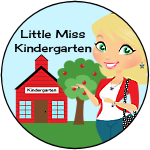Hey Friends,
We have been having some kind of fun lately learning about Story Elements and Story Retelling with two of our all time favorite books and characters with The Three Little Pigs and The Three Bears. Starting with a familiar text and building from there has proven to be a success for my class this year. It did not take long before we were able to identify and describe the characters, setting and key events in these classic stories. And we had a good time sequencing story events together. I was also happy to see that we were quickly able to work on story retelling and sequencing in pairs and then independently. This is sure to be a hit as a new addition to our Daily 5 routine. I think we have a firm understanding of the three ways to read a book and story retelling might just be one of our favorites now!
It sure has been nice to see some independent behaviors emerge and to feel as though we all have had success in these lessons. And now we can move on to some less familiar texts and apply the same strategies. I think we are ready! If you are interested in my We Can Learn About Story Elements Packet just click on the Three Little Pigs and it will take you there. If you need a copy of 3 Ways to Read a Book just click on the image above and grab it.
This download is Common Core Aligned:
K.RL.1
With prompting and support, ask and
answer questions about key details in a text.
K.RL.2
With prompting and support, retell familiar
stories, including key details.
K.RL.3
With prompting and support, identify
characters, settings, and major events in a story.
K.RIT.1
With prompting and support, ask and
answer questions about key details in a text.
K.RIT.2
With prompting and support, identify the
main topic and retell key details of a text.
And covers TEKS Objectives:
Reading/Comprehension
of Literary Text/Theme and Genre. Students analyze, make inferences and draw
conclusions about theme and genre in different cultural, historical, and
contemporary contexts and provide evidence from the text to support their
understanding. Students are expected to:
K.6
(A) identify elements of a story
including setting, character, and key events;
(B)
discuss the big idea (theme) of a well-known folktale or fable and connect it
to personal experience;
(C)
recognize sensory details; and
(D)
recognize recurring phrases and characters in traditional fairy tales,
lullabies, and folktales from various cultures.
(8)
Reading/Comprehension of Literary Text/Fiction. Students understand, make
inferences and draw conclusions about the structure and elements of fiction and
provide evidence from text to support their understanding. Students are
expected to:
(A)
retell a main event from a story read aloud; and
(B)
describe characters in a story and the reasons for their actions.



































1 comment:
Thanks for sharing these great ideas. Love the graphics. Renee
Post a Comment